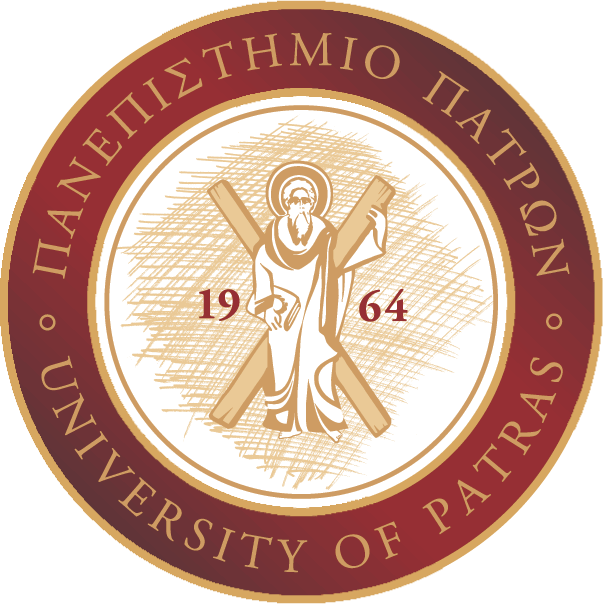REPERTORY OF GREEK SHADOW THEATRE [KARAGIOZIS] IN PATRA IN THE INTERWAR PERIOD (1922-1940)
FINANCED BY THE RESEARCH PROGRAM C. CARATHÉODORY
RESEARCH COMMITTEE-UNIVERSITY OF PATRAS – GREECE
Project Duration: March 2010-March 2013
Principal Investigator: Joanna Papageorgiou
Assistant researchers: Nicoletta Christofi, Thomas Kolovos, post-graduate students, Department of Theatre Studies
Fellow Researchers: Dr. Maria Mavrogeni, University of Crete
Karagkiozis or Greek Shadow Theatre
Karaghiozis [or Karagkiozis /Karaghiozis] is a form of shadow theatre denoting strong Hellenic identity. It originated from the Ottoman Karagöz. The transformation of the ottoman ancestor into a popular Hellenic symbol took place in Hellenic cities (especially those of Athens and Patras) at the end of the 19th century. The assimilation was achieved through the creation of various stock characters (around 8-10) who embody regional or class types of Hellenes, and through the representation of national and regional manners.
The theatre of Karaghiozis articulated, in a way that was often grotesque and seemingly absurd, the dreams and the ideas of lower-class people for more than fifty years. Its acme coincided with the transition of Hellas from its traditional agricultural character to a modern semi-bourgeois country. The decline of the genre began in the early 1950s and was concluded in the 1970s. The tradition is still carried on by contemporary puppeteers, yet the context that had created that unique form of theatre has disappeared.
Karaghiozis is mostly an oral type of theatre, though the impact of written culture is significant. During the fifty years of its development it presented several hundreds of plays. Those plays formed part of a collective puppeteer tradition in the same way as the stock characters of that theatre did. Each puppeteer may have added a new element or made some changes but no-one owned a play. It should be noted that, due to the oral form of the ‘texts’, each play has attained as many versions as the number of its performances. Most of the plays were comic but several of them had serious themes drawn from history and social life. The intrinsic aspect of Karaghiozis theatre is that, while it ridiculed the values of the established civilization, at the same time it propounded nationalistic ideals and venerated Orthodox religion.
Picture 1: The puppeteer Yiannaros
The soul of a Karagkiozis performance is just a single [male] man: the karaghiozopaichtis (puppeteer/ Karaghiozis player). He voices all the characters, handles the two-dimensional figures behind the berdé (a screen made from cloth), sings the songs of each character, and, often, has also crafted the figures. His sine-qua-non qualities is good memory, the gift to adapt his voice to the peculiar timbre of each character, the ability to improvise and create an immediate contact with his audience, and most of all, a knack to adapt the canvas of a play to the current conditions of the performance. In a way, he must be endowed with the talents of a modern stand-up performer, and of a commedia dell’ arte player. He usually has an assistant helping him manipulate extra figures and produce sound effects.
Figures and stock characters: At the beginning of the 20th century, the figures were made of cardboard. The silhouette was outlined by small holes perforated on the paper. Around the 1920s elaborately curved and coloured leather replaced the paper, and later on plastic material [gelatine] was used. Both materials have the advantage of transparency
Picture 2: Figures of Karaghiozis
Central figures of the performance are a pair of contrasting characters: the iconoclast and mischievous Karaghiozis, and the docile Hatziavatis. Karaghiozis is hunchbacked, his right hand is always depicted long, in order to steal and punch the other figures, his clothes are ragged and patched, and his feet are always bare.
Karaghiozis and Hatziavatis are surrounded by Karaghiozis’ family, that is, his wife and his (usually three) children, which are exact copies of their father, and by a handful of other types: Barba-Yiorgos (the crude mountain shepherd), Dionysios from the island of Zante, the stringy Jew, the quarrelsome but coward Stavrakas (a representative of the Hellenic urban underworld), the stupid long-nosed Morfonios, and some other minor types. Karaghiozis and his impoverished family live in a dilapidated hut. At the other side of the berdé, the imposing residence of the Turkish Pasha or Vizier stands. Its inhabitants – the Vizier, his beautiful daughter, and the officers- represent the national and class enemies of the first group of characters.
Project Description
Hellenic shadow theatre (Karaghiozis) is an area of Modern Hellenic theatre that has won the attention of non-academic intellectuals since the 1930s because it was considered as a representative form of the urban popular culture of Hellas. As a result, literature on the subject is quite extensive. Moreover, Karaghiozis became a point of dispute between intellectuals who used it to support contradictory interpretations of original national identity. On the other hand, the low-class carnivalesque Karaghiozis was met with disdain by scholars until the 1980s. Consequently, academic research, though not negligible, has not been sufficiently developed. Even more limited is the research in the Shadow Theatre of Patrai (in Western Hellas), whose contribution to the nationalisation of the Ottoman ancestor has been considered critical.
The project aspires to cover the lack of research regarding the Karaghiozis theatre of Patrai during the interwar period (1922-40). It aims at collecting and electronically processing evidence related to the performances and the repertoire of the Karaghiozis puppeteers whose centre of activity was the city of Patrai during that period. Collected research material is processed according to specific criteria of classification that will allow a thorough study of the formation and development of this repertoire.
The material is primarily collected from Patrai’s daily press of the interwar period, from various archives, and other written and oral testimonies. A useful source is some puppeteers’ handbooks. This material is being collected and recorded by post-graduate students of the Patrai University. Collected material is filed in recording cards and three electronic databases.
In the first database, the titles of written or oral recordings of Karaghiozis plays are registered, together with the libraries or the collections in which each item may be found. The recordings are categorised in groups according to the similarity of plots. This database provides a systematic listing of the scattered source material of Karaghiozis plays – a truly difficult endeavour due to the fact that each ‘play’ is a fluid creation that is transformed from one recording to another, mixing story elements from other plays.
In another database Karaghiozis performances in Patrai during the interwar period are recorded, including information about performance-places and the audience.
The third data file contains the canvases of the surviving versions of a ‘play’, with the objective to create a comprehensive collection of the plot-stories comprising that unceasingly flowing oral art.
The next stage of the project will be the grouping of the plays according to the puppeteers that performed them, the source of the story and, finally, the contents themselves. So far the investigation of the plays’ contents permits their classification to comedies, heroic-, mythological-, historical-, socio-dramatic-, and robber-plays and those based on folk tales or on Ottoman prototypes. Each category may be devised in sub-categories, as for example in comedies of professions, of family matters, of adventures etc.
The ultimate objective of the project is to carry out a thorough examination of the data in order to demonstrate the formation and evolution of the repertoire of shadow theatre in Patrai. It would be a substantial contribution to the research of oral culture: A. Tracing of the sources of inspiration for the artists; B. Investigating the peculiarities of each play-version in regard with the education, the experiences and interests of each player; and C. The real extent of the influence of written culture on the oral art of Karaghiozis.
It would be extremely useful to analyze the structure of canvasses, the process of “dramatization” of the original source, and the transformations brought upon a play after its initial conception. Another aspect of analysis could be the examination of the types of “plays” that dominated the repertoire exemplifying the preferences of the audience as well as the capacities of each performer.
Completing the several stages of the project, that peculiar form of oral theatre, Karaghiozis, will attain its rightful place in the research of popular city culture during the phase of urbanisation in Hellas.




